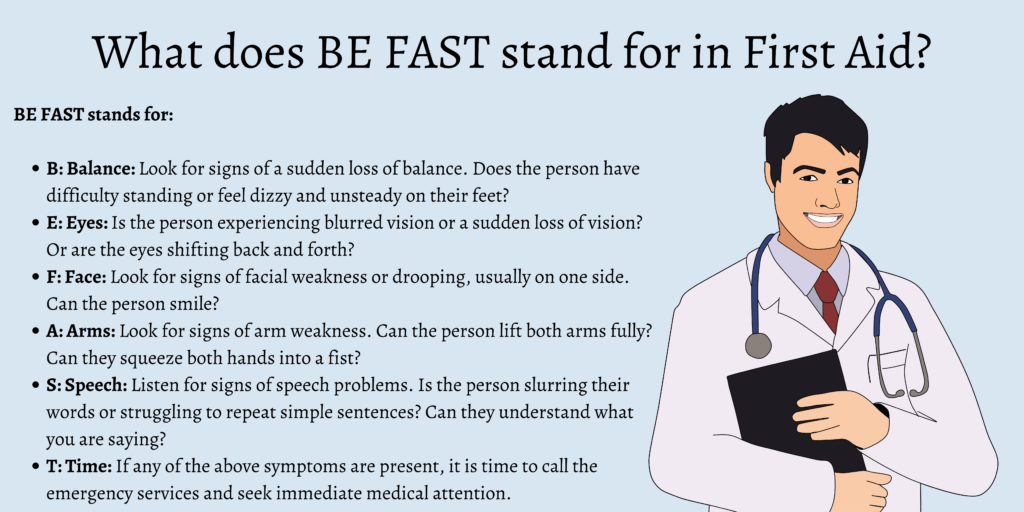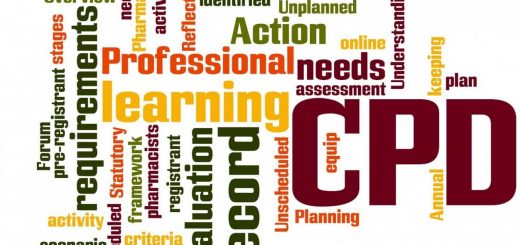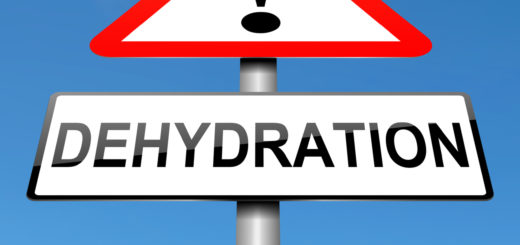What does BE FAST stand for in First Aid?
The ‘FAST’ test is a well-known tool used to identify the key warning signs of a stroke. A stroke is a life-threatening emergency that occurs when the blood supply to the brain is interrupted. During a stroke, brain cells become starved of oxygen and can die leading to permanent disability or death.
A stroke can happen to anyone at any time, and the earlier a patient receives treatment, the better their outcome will be. So, knowing how to spot the signs of a stroke and what actions to take is an essential skill in a first aider’s toolkit.
The FAST test stands for:
- F: Face: Look for signs of facial weakness or drooping, usually on one side. Can the person smile?
- A: Arms: – Look for signs of arm weakness. Can the person lift both arms fully? Can they squeeze both hands into a fist?
- S: Speech: Listen for signs of speech problems. Is the person slurring their words or struggling to repeat simple sentences? Can they understand what you are saying?
- T: Time: If any of the above symptoms are present, it is time to call the emergency services and seek immediate medical attention.
The ‘BE FAST’ Test for Recognizing a Stroke
Some stroke symptoms may not be picked up by using the FAST test. The blood supply to the brain is complex and involves many blood vessels. The disruption of some of these blood vessels may result in balance or eyesight problems.
So, the BE FAST test is an alternative acronym that can help you to identify additional warning signs of a stroke.
BE FAST stands for:
- B: Balance: Look for signs of a sudden loss of balance. Does the person have difficulty standing or feel dizzy and unsteady on their feet? Does the room feel like it’s spinning?
- E: Eyes: Is the person experiencing blurred vision or a sudden loss of vision? Or are the eyes shifting back and forth?
- F: Face
- A: Arms
- S: Speach
- T: Time
If a patient has any warning signs of a stroke after testing BE FAST then urgent medical help should be sought. Dial 911 (or your national equivalent emergency number) immediately. Take note of the time of the onset of symptoms and report this to medics when they arrive.
An urgent brain scan will be required to exclude bleeding as a cause of the patient’s symptoms. Some stroke patients will be eligible to receive clot-busting drug therapy (known as thrombolysis) in order to break down the clot causing the symptoms.
Conclusion
A stroke is a life-threatening medical emergency that needs immediate medical attention. So, be sure to memorize the FAST and BE FAST acronyms so that you know what to do if you, or someone else, experiences symptoms of a stroke. For more information about strokes and who is at risk, read our guide here






